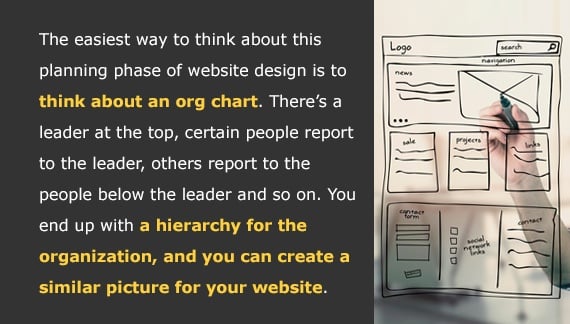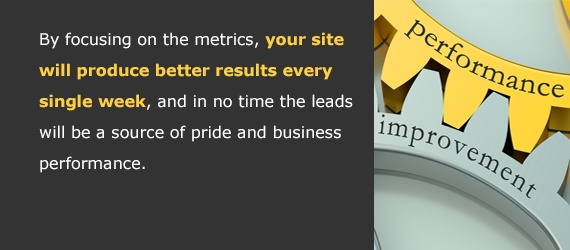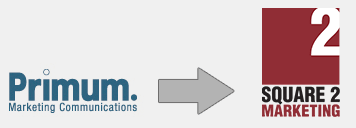
Converting Leads Is Easy, If You Build Your Website The Right Way
How To Orchestrate Strategy And Content To Generate Leads For Your Sales Team
You're reading this guide because you know your website should be producing more leads than it is currently. The question, then, is how do you turn your website into the lead generation machine it ought to be? The answer includes several marketing tactics that you might have thought were unrelated to getting leads from your website.
We've mentioned before that inbound marketing, while highly effective and very efficient, is much more complex than the marketing you might have done in the past or the marketing you might currently be doing for your company. Every single tactic needs to be perfectly connected for inbound marketing to produce the results you're expecting.
Let's jump right in. Before you start designing pages, writing copy, coding HTML or even searching for a website firm, you need to have your strategy locked down.
The Secret To Lead Generation Is A Comprehensive Website Strategy
Having been doing this for over 13 years, if there is one rallying cry above all others, it's "strategy before tactics." I've seen so many projects go bad because the strategy wasn't locked down before the project started. You don't want to make that mistake. When it comes to websites, you have to know your strategy before you start designing a single page.
 Architecture
Architecture
Building a site that actually generates leads requires strategic thinking that starts all the way back at site architecture, just like an architect designs a house before the builder starts. Everyone provides input, the designs are created, they're approved and then the designs are turned over to the builder. The same approach should be taken with your website.
Site architecture comes into play in several areas, but the place to start is usually the arch map and navigation. You need to determine what pages are needed on the site and how the pages will be connected to each other, presented to the visitors and organized to allow the visitors to easily flow through them.

You have the home page at the top, all the secondary pages link up to the home page and those secondary pages link to additional pages. It all gets mapped out here. If you're planning on a utility navigation (those extra links at the top of the page, like our "Learn Inbound – A Guide," "Blog" and "Resources") just put those in as connected to the home page but off to the side.
This picture of your full site shows every single page and link, providing the basis for the navigation. Having this done up front makes all the rest of the steps much easier.
 Visitor Flow
Visitor Flow
It's easy to build a website that is difficult to navigate. You keep adding pages, you keep adding drop-downs, you keep adding products or services and before you know it, you have a collection of pages that provide little or no support for the visitor.
While you're doing your planning, and in particular when you do your architecture map, keep visitor flow in mind and make it strategic. What pages do you want your visitors to go to first? What pages do you want them to visit next? What pages do you want them to end up on? What pages give them a chance to act? More on this in a later section.
By going through this exercise, it's more likely that your site will be simple, easy to navigate and make it easy for your visitors to find what they're looking for.
 Page Blueprint
Page Blueprint
Think about your pages like the rooms in the house you're building. Again, the architect has to help you know where to put the closet, where the toilet needs to be to support the plumbing and where the electrical outlets should go. All of those details need to be planned before a single nail gets hammered in. You need this for your site, too.
By this point you have all the pages identified and it's time to drill into each page. Who is this page for? What persona? What stage of the buyer journey? You'll need pages for people in the awareness stage, in the consideration stage and in the decision-making stage. You might need pages for specific vertical markets or specific role-based pages.
On each page you'll need headlines, sub-headlines, copy, images and a full complement of search engine optimization content to help the page rank on Google. You'll need to know what offers to include and what forms to deploy. You want all of this done before you start a single line of code.
You Should Consider Agile Development Or Growth-Driven Design
Building a website with the inbound marketing components and the strategic approach we recommend here doesn't have to take six months unless you want it to. Today, websites are deployed in pieces and worked on monthly. If you have a site architecture and plan that includes 25 pages, instead of waiting for all 25 pages to be done and ready to go, prioritize the site pages.
What pages are absolutely necessary to go live? What are the minimum requirements for the site to go live? Start with that scope of work. It might be five pages and the site can go live in 30 days, with pages getting added to the site over the next few months. It might be 15 pages and the site takes 10 weeks to go live, with the rest coming online over time post-launch. Do yourself a favor and don't wait for the site to be completely done. Don't wait for it to be perfect. Instead, get pages live, get visitor usage data and make adjustments to your plan around the pages still in planning.

Turning Visitors Into Leads Has Everything To Do With Content Strategy
Just like we talked about Agile website development, consider deploying content using an Agile approach. Your website blueprint might call for 15 pieces of content to drive conversions, but if you only have three offers to start, don't wait on the other 12. Instead, get started with what you have and learn from your visitors' interactions with those available offers.
 Persona Prioritization
Persona Prioritization
One way to decide which offers are most important is to prioritize your personas. Most companies have several personas they want to target with their marketing. Don't attempt to go after them all simultaneously. Force your team to prioritize based on company strategy, opportunity, competition, profitability or size of the market.
It might even make sense to borrow Geoffrey Moore's market segmentation approach, which suggests a bowling pin model. Focus on the lead pin first, then identify target personas two and three. If you're successful in knocking down the lead persona, getting the second and third persona to fall will be easier. This model allows you to plan up to 10 personas or market segments. That should be plenty for any organization.
 Content In Context
Content In Context
For content to excel at converting visitors into leads, it has to be delivered in context. Here is an example. If in a blog article I talk about SEO and then provide you an offer to download an e-book on email marketing, I've given you content out of context. If in that same article I give you an offer for a whitepaper on improving the search engine optimization rankings for your website, it makes more sense to the reader or visitor and your conversion rates will increase.
You need to apply the same thinking across your entire website. What this typically uncovers is gaps in your available content. This should function as a map for the content you need to complete in the future.
You also need to think about your website in relation to the questions your prospects typically ask during the sales process. We've found (and research supports) that prospects have much different questions at the awareness stage than they do at the consideration and decision-making stages of the buyer journey. You should already have been thinking about pages for each stage and the copy on those pages should help with those questions, but content and offers help you go deeper and provide even more information.
Again, do this well and you'll see dramatic improvements in conversion rates and a stream of leads flowing in at all stages of the sales funnel and buyer journey.
Conversion Strategy Is A Weekly Activity If You Want To Pump Up The Volume On Leads
The days of doing your website and then thinking you won't have to worry about the site for three or four years are over. Your website must be a corporate asset that is nurtured every single week. You need to budget for weekly optimization and plan on allocating smart, web savvy resources to be constantly upgrading, updating and optimizing your site so it produces better results month over month.
 Goal Setting
Goal Setting
Since we're talking about results, let's set some goals. What gets measured gets done. Start by establishing some quantitative metrics for your website. How many visitors do you need every month? What is the desired site-wide conversion rate? How many leads do you need? How many top-of-the-funnel leads, middle-of-the-funnel leads and bottom-of-the-funnel leads do you need?
What should your bounce rate be? So you have a guide, most sites have around a 50% bounce rate, and most site-wide conversion rates are between 1% and 3% across all the pages on the site. You're going to want to set goals for specific landing pages, for offers, for forms and for your calls-to-action buttons. The site is filled with elements that need to perform. Set those expectations up front and then work diligently to hit or even exceed those goals.

It's easy to build a website. It's hard to build a website that drives leads into your sales funnel. This is one reason why your website shouldn't cost $5,000. It's also a reason why your nephew or the local two-person shop down the street shouldn't do your site.
If you want a website that generates leads, this is the only way to get it. Your website needs to be aligned with your overall company goals and strategic direction. Get started today!










